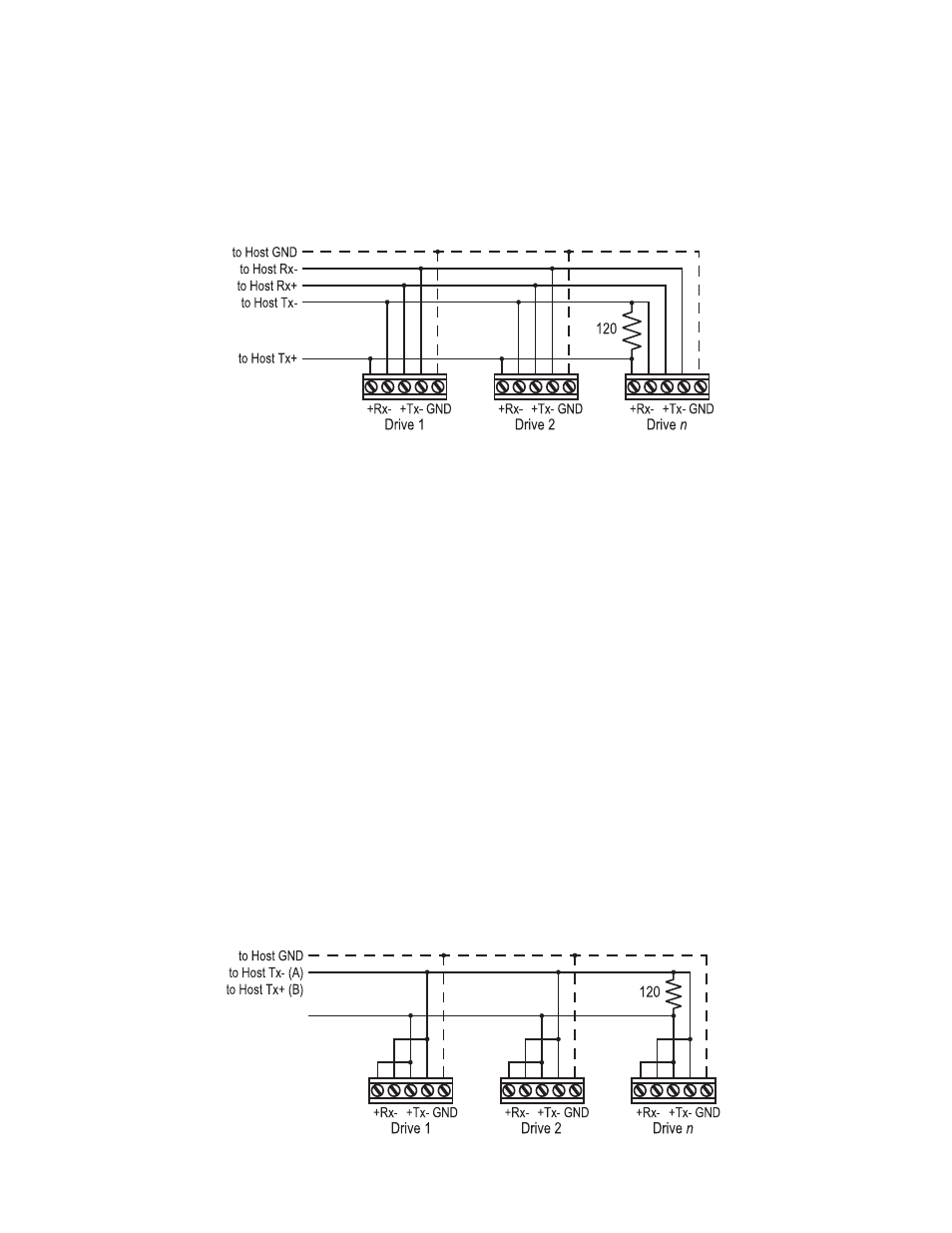Connecting to a host using 2-wire rs-485 – Applied Motion RS-232 User Manual
Page 247

247
920-0002 Rev. I
2/2013
Host Command Reference
1. Connect the drive TX+ to the host RX+.
2. Connect the drive TX- to the host RX-.
3. Connect the drive RX+ to the host TX+.
4. Connect the drive RX- to the host TX-.
5. Connect GND to the host signal ground.
6. We recommend a 120 ohm terminating resistor be connected between the Rx+ and Rx- terminals of
the drive farthest from the host.
NOTE: Proper cable shielding is a must. High voltage, high frequency, high current signals that are present
on the servo motor cables can emit a significant amount of electrical interference. Without proper shielding on the
communications wiring this interference can disrupt even noise-tolerant differential line drivers.
Getting and Connecting an RS-485 4-wire adapter to your PC.
If you are using your computer to communicate to the drive(s) and therefore need an RS-485 adapter, model
117701 from Jameco Electronics (800-831-4242) works well. This adaptor is for a 25-pin serial port. If you are
like most people and have a 9-pin serial port on your PC, you will also need to purchase Jameco cable 31721.
Connect as follows:
Adaptor Terminal
Drive Terminal
1 RX+
2 RX-
3 TX-
4 TX+
Set the switches on the Jameco adaptor for DCE and TxON, RxON. Don’t forget to plug in the DC power
adapter that comes with the unit.
Connecting to a host using 2-wire RS-485
An Applied Motion drive’s 2-wire RS-485 implementation is a multi-drop network with one pair of wires that is
used for both transmit and receive. To make this type of connection you will first need to jumper the TX+ terminal
of a drive to it’s own RX+ terminal, and then do the same with the TX- and RX- terminals. To then connect a drive
to the host, you will need to connect the TX+/RX+ terminals of the drive to the host’s TX+/RX+ terminal, and then
the TX-/RX- terminals of the drive to the host’s TX-/RX- terminal. We also recommend a 120 terminating resistor
be connected between the Tx+ and Tx- terminals of the drive farthest from the host. Here is a diagram.
